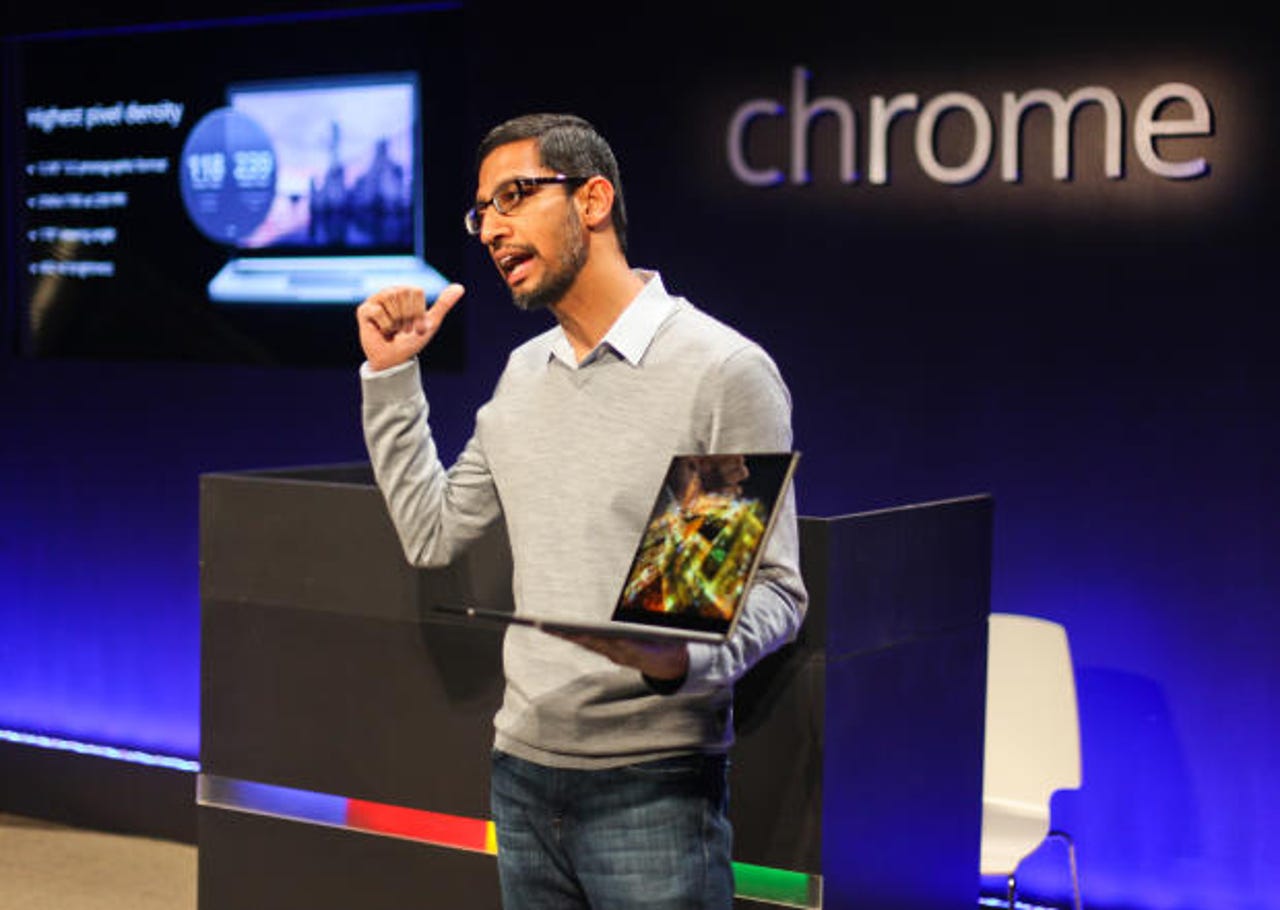Chromebook Pixel: Google I/O could reveal its secret mission


It's time to find out the raison d'être of the Chromebook Pixel. I refuse to believe that all that high-end hardware is meant to run a really fast web browser, and I have a conspiracy theory about the secret mission of the Chromebook Pixel. I'm going to be looking for clues coming out of Google I/O this week to see if they support my theory.
I'll confess that I'm infatuated with the Pixel. I shouldn’t really like the world's most over-priced and over-engineered web browser—that's truly what the Pixel is—but it's fast, simple, and it just works for most of the stuff I do. And, yes, I've been beguiled by its outstanding display.
Google I/
Still, I wouldn't pay US$1300 out of my own pocket to buy a Pixel, so I can hardly recommend it to others—at least not yet. A lot of the techies I talk to have a similar opinion, even the ones that live and die in the cloud and typically buy the latest cutting edge devices.
That has left me to wonder why Google would put so much energy and so many resources into a product that appeals to so few. An even bigger question is why Google would load the Chromebook Pixel with so much high-end hardware, when the Samsung Chromebook runs just fine on a US$250 ARM-powered system.
A costly and powerful Intel Core-i5 chip runs the Pixel, along with 4GB of RAM, 32GB/64GB of Flash storage, dual-band Wi-Fi, a huge glass trackpad, high definition webcam, multiple microphone array, and high quality built-in stereo speakers. That's a ton of hardware to throw at at device that does nothing but load web pages. And, we haven't even talked about the Pixel's screen yet.
The Pixel's crowning glory is its 2560 x 1700 resolution multi-touch display. At 239 pixels per inch (PPI), it even has slightly higher resolution that Apple's Retina Display on the MacBook Pro. The touchscreen works great, especially for scrolling and zooming, but oddly there are very few functions on the Pixel that take advantage of it (Google hasn't forced touch on PC users the way Windows 8 has).
And, that's where my theory comes in. The fact that Google went to all of this trouble to create a touchscreen laptop but launched it with such a small set of multi-touch capabilities points to a big Chromebook software update in the future.
While such an update could greatly enhance what you can do with the Pixel's touchscreen, I have to believe that it could also significantly broaden ChromeOS in general and the Pixel specifically. When I look at the Pixel, I see Google telegraphing its intentions for the future of Chromebooks, and it's clear that Google wants Chromebooks to do a lot more than just send and receive emails, edit online documents, and read through static web pages.
The Chromebook Pixel is a future-leaning device that is destined to be paired with a greatly-expanded version of ChromeOS to take advantage of all that high-end hardware. In other words, it looks like a machine that Google pushed into the market with the intention of developing into something much more powerful. Think of it as a proof-of-concept that shows where Chromebooks can go, in order to entice a lot more developers to get on board.
However, Google itself is going to have to do more with ChromeOS and the Chromebook in order to excite more developers and to attract more consumers and enterprises. That's where Google I/O comes in this week. The leader in charge of the now-unified Chrome and Android divisions at Google, Sundar Pichai, indicated last week that Google I/O is going to be less about new product launches and more about driving the the ecosystems of Chrome and Android.
In terms of what Google can and might do to enhance ChromeOS and the Chromebook Pixel, the list could include enhanced offline capabilities for important web apps, more Google-developed apps for missing functionality like photo and video editing, and easier file storage and backups.
But, the biggest and most anticipated development could be the ability to run Android tablet apps on ChromeOS, especially on the multitouch Chromebook Pixel. While there would be some key details to overcome—most notably screen resolution—the addition of these large screen Android apps would immediately bring an welcome set of expanded capabilities, as James Kendrick has previously explained. If we don't see it at Google I/O 2013, keep an eye out for it in the future, since Pichai hinted that more Chrome and Android synergies are coming.
And, more generally, I'd recommend that you watch the information coming out of Google I/O this week for ChromeOS improvements that could shed light on Google's bigger vision for the Chromebook Pixel.
Google will livestream the Google I/O 2013 keynote on YouTube at 9:00AM Pacific on Wednesday. If you're working and can't watch the video, then you can also follow along with CNET's live blog. You can also follow my Twitter or Google+ stream for my live analysis of the events.